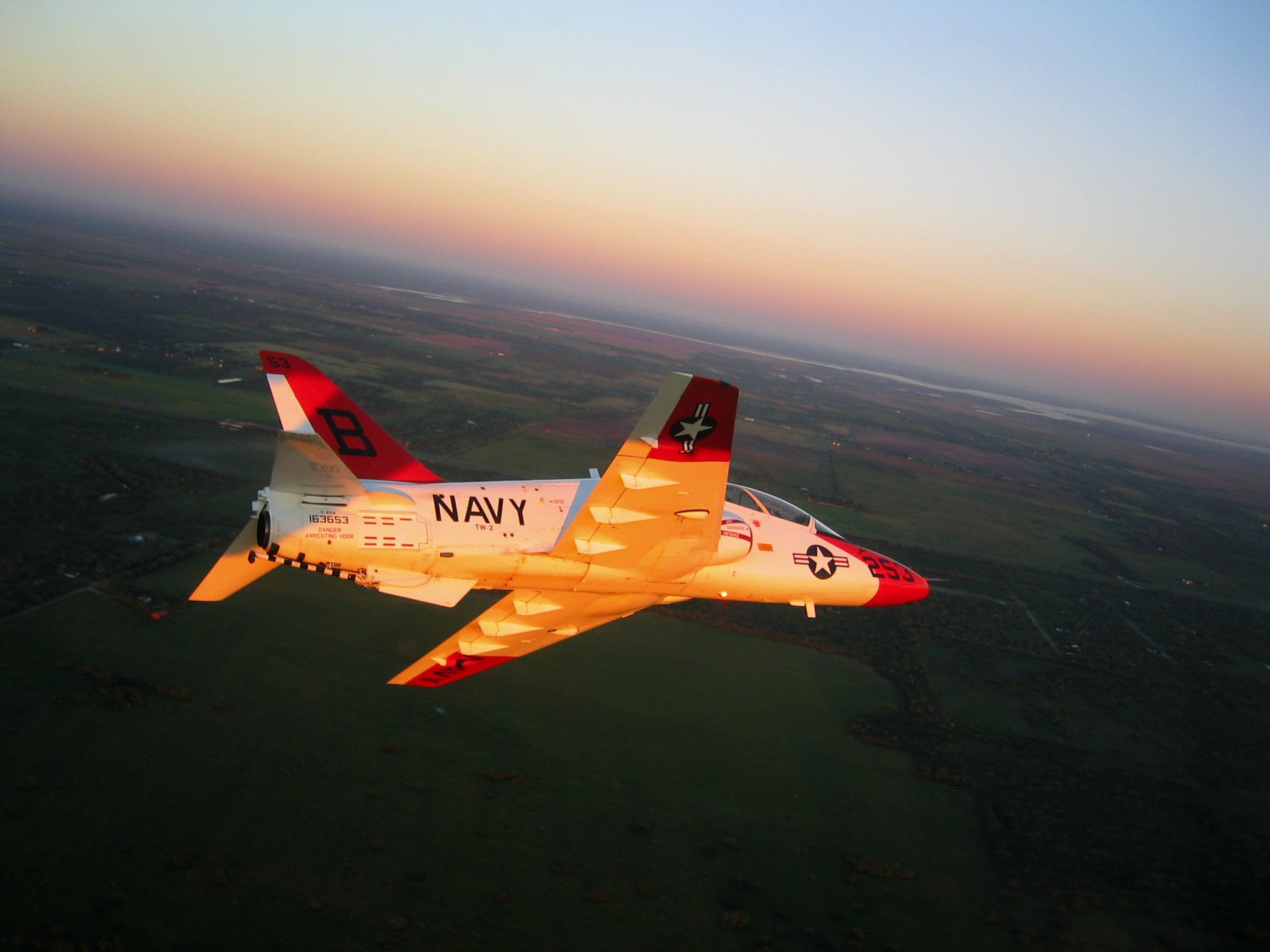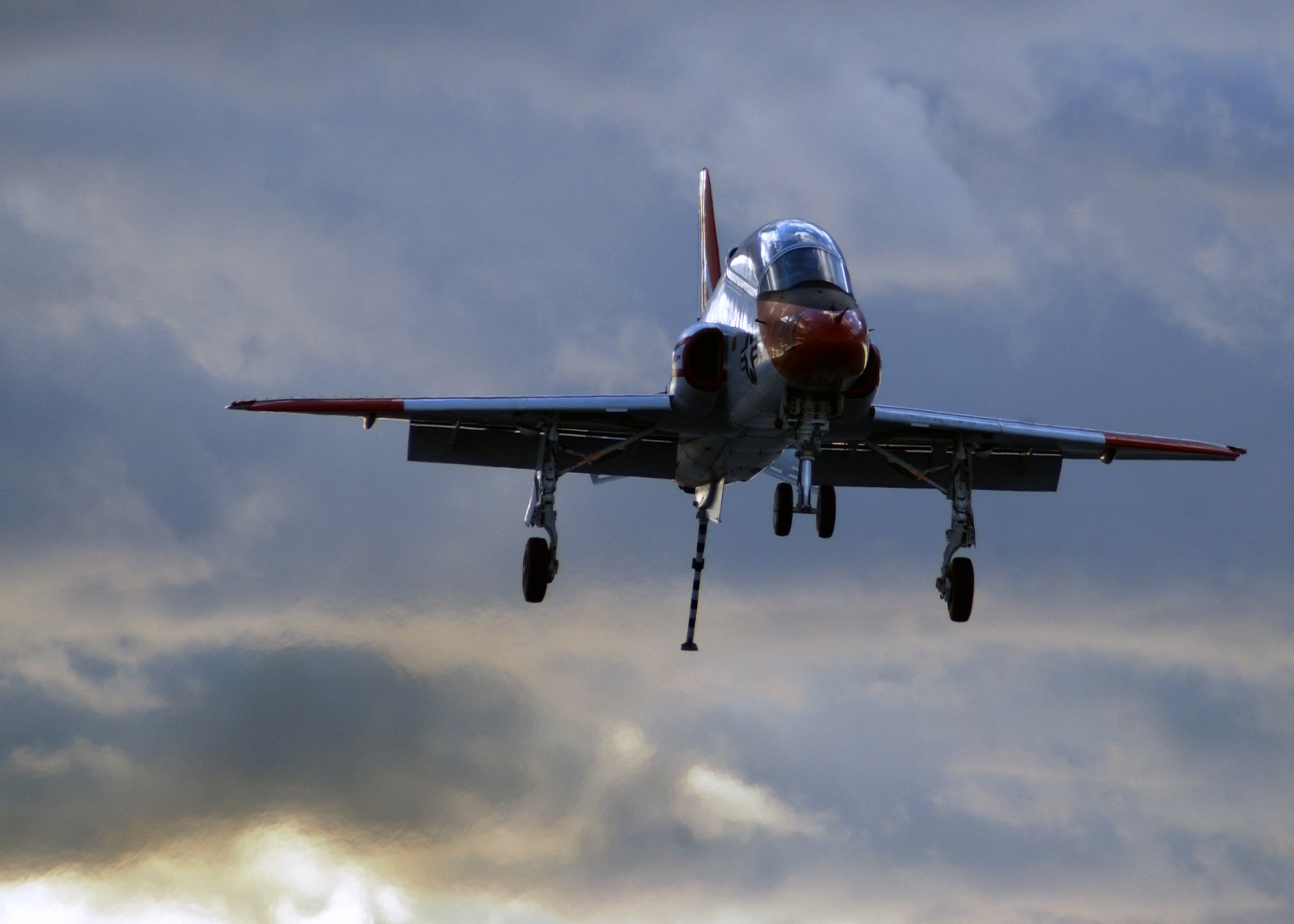Know Your Audience
It had only been a few months since I left my E-2C Hawkeye squadron, VAW-117 in Pt. Mugu, California and checked into VT-22 as an instructor pilot and Landing Signals Officer (LSO) in Kingsville, Texas. There was a lot to learn going back to flying the T-45 in both the A and C models as well as teaching for the first time in any real capacity. I had spent the previous three years flying the Hawkeye and deploying around the globe while working on my squadron tactical qualifications as well as earning my wing qualification as an LSO. That wing LSO qualification earned me the opportunity to go back to flight school and teach new students how to land on an aircraft carrier. While I was looking forward to a little relaxation after the operational tempo of the previous three years, I was still learning how to teach new Navy and Marine Corps students to ensure they were prepared for what their futures had in store for them.
A couple months after checking in and getting my basic instructor qualifications out of the way it was time to teach my first group of students the fine art of landing a multimillion-dollar aircraft on a multibillion-dollar aircraft carrier. We would start with a mass briefing. There would be an introduction of all the LSOs to the students, which in this case was three LSOs for 21 students. Next phase was after a brief ground school the students would go into the simulator for a few training events before ultimately coming back to the squadron. The next three weeks would essentially become a Groundhog Day of sorts which included a brief and usually two flights for each student. They would practice 6-8 landings before stopping and switching out of the jet so that another student could hop in. By operating this way, we could maximize the amount of training for the students and get them hundreds of practice landings in a relatively short period of time. This was a fun and stressful time for the students as they got to fly solo a lot, but each landing was being graded very carefully to ensure they were progressing at the rate they needed to before heading out to the ship.
At the end of every period of flying each LSO would debrief their seven students on every landing. It was critical to talk about trends that we saw and give the students things to work on. One important thing that we would stress was not trying to fix everything at once. It was critical to try to change just one variable and then see how that worked. If it worked, great, but if not then work on changing something else. Over the days and weeks, the students were progressing at different rates, but all were on track to leave with their friends to head to Cecil Field in Florida and to the USS George H.W. Bush aircraft carrier. As LSOs, we were also learning from the senior LSO in our group. Waving aircraft in the fleet with seasoned pilots was vastly different then waving students who had never seen an aircraft carrier. We were told that you will see different trends, but the biggest student to keep an eye on was not the one who was struggling at the field but actually the one that was doing great. A lot of times it was that student who got spooked the most when they found themselves behind an aircraft carrier for the first time.
As the carrier qualification detachment approached, I found myself excited to be sharing this experience with my seven students. To this day I can remember every aspect of my initial carrier qualification and it is truly something that sets naval aviators apart from other aviators. It is every bit of a rite of passage as anything else I have done in my career. After finishing up the training in Kingsville, TX all seven of my students had progressed to a level that allowed them to head to the carrier qualification detachment in Florida, and I was very proud of each and every one of them. I knew that some would struggle more than others, but I felt confident that all would come home completing this phase of training successfully. A couple days after flying from Kingsville to Cecil Field I found myself on the aircraft carrier. I had never been on the USS Bush before, but it felt good to breathe in the salt air and be on the LSO platform again. The differences between this training and being in the fleet were very obvious from the start. In the fleet the flight deck was crowded with various types of aircraft crammed within inches of each other, but now there was just a handful of T-45 Goshawk aircraft from both NAS Kingsville and NAS Meridian. The flight deck of the carrier seemed bigger than any other I had ever seen even though it was the same size. I was excited to get the day started and see how my students would do.
For the most part, day one was what I expected. The students who struggled at the field tended to struggle a little at the boat and vice versa with one exception. I had one Marine student who was an absolute rockstar at the field. Every landing was the same and damn near perfect for his level of training. I never worried about him making any bonehead mistakes or doing anything unsafe. Honestly, I had let my guard down. Did someone invite Mr. Murphy (of Murphy’s Law) to this carrier qualification detachment? When this student got to the ship he froze. He started making mistakes that the other students were doing at the field at the beginning of training, but all of them had learned from their mistakes. This Marine had regressed in a manner that I was starting to get concerned with and so were the other LSOs on the platform. When it comes to being an LSO you are never alone, and there is always a team up there working together to safely and expeditiously land aircraft. The other LSOs were starting to take notice of this student and it showed. At the end of day one I spent a lot of time in the ready room below deck talking to him about the basics. I was trying to get his head back in the game and I told him that he was still on track to pass, even if that was a little white lie. The fact was he had to come out on day two and show a great deal of improvement or he would risk failing this training.
Day two started with another mass briefing with all my students before they headed to the flight deck. I reminded each of them what they needed to work on in order to qualify, and I also reminded them not to do anything stupid after they had finished. We all heard stories of pilots who qualified only to fly back to the beach and buzz the tower or do an aileron roll off of the catapult launch. They were greeted with a failure and ultimately being thrown out of training, and I did not want any of my students to experience that. I took extra time with my Marine student who seemed concerned with his grades. I told him to not worry about the grades, that was my job. I told him to go back to the basics. At this point I was taking a very kind, almost parental approach to his training. I felt like it was critical to build up his confidence.
My Marine was in the first wave of students to takeoff so I would see how my approach would work right away. For the first two landings he didn’t look bad. Both of those approaches ended in a touch and go based on the requirements for training, and it was his third pass that he would put his hook down and trap aboard the carrier. I watched as he flew around the approach turn, and at the beginning he looked good. Maybe he had listened and calmed down. Unfortunately, as soon as he rolled out behind the ship, he got nervous again. While he ultimately landed on that approach, it was not a pretty landing. The Airboss of the ship sidelined his aircraft partially to get fuel, but also to calm him down. The Airboss called down to the LSO platform and told us to talk to him and calm him down or he was going to have him shutdown. He was not interested in having an accident on his flight deck. I had some decisions to make. First, I had to decide if I wanted to let this young Marine keep going or end his training right now. Second, if I decided to keep him going, I had to decide how to talk to him over the radio to get his head back on track. It is times like this that, regardless of what you are teaching, you have to listen to your gut.
When there was a break in the landing pattern, I called up my student on the radio. This was the tower frequency of the ship and everyone was listening. We did not use names as each student was given a qualification number like G-1, G-2 etc. so that we could talk to them and keep track of their landings. When I called this Marine on the radio my “pep talk” went like this. “Listen up Marine! What I need right now is for you to forget about everything else in your life and pull your head out of your butt and fly that damn plane like we both know you can…any questions?” The response I heard was a simple “No, Sir” as I was met by a dozen shocked looks from the other LSOs on the platform. I did not have to wait for a break in the awkwardness long because the Airboss immediately called down to the platform and was irate. He didn’t want the Marine to even takeoff now, but my gut told me that what I did was correct. After a discussion my student was allowed to launch, and I watched with eagerness as he flew the approach turn and set up for landing. I can tell you that beyond a shadow of a doubt it was the best landing I had seen all day from any student. The head LSO on the platform seemed pleased, and my student was allowed to continue.
The Marine ultimately went on to get his carrier qualification and earn his wings of gold. He went onto a very successful career as a Marine Corps Fighter pilot and I will never forget what he said to me when we got back to Cecil field that day. “Thanks sir, I really needed that slap upside the head…I couldn’t have done it without you.” With that I learned a very valuable lesson of being an instructor that has stuck with me. Regardless of what you are teaching, you can be the smartest person in the room but if you cannot read your audience and present the subject in a manner that they can receive, understand and process, then you are useless. Our egos often get in our way, having us think we are superior to others just because we are the instructor. Ultimately the best instructors are those who can stay humble enough to remember where they have come from, but confident enough to use their knowledge to lift up others around them. I am truly thankful for all those students over the years to whom I was able to teach the fine art of landing on an aircraft carrier, and hopefully I was able to learn as much from them as they from me.



